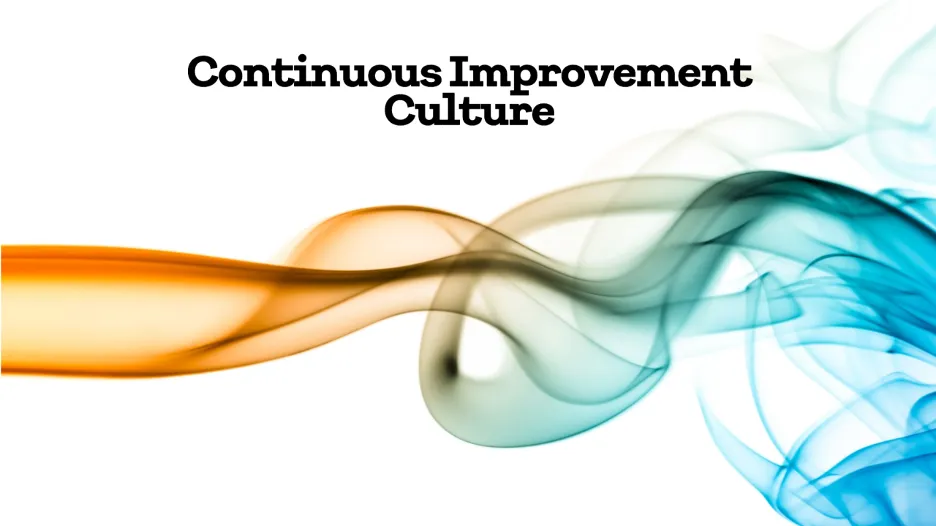
The Significance of Continuous Improvement in Achieving Operational Excellence (Part 1)
September 3, 2024
In today’s fast-paced business world, achieving operational excellence is more than just a goal—it's a necessity. Continuous improvement plays a vital role in driving this excellence, and it's a mindset that should be embedded throughout the entire organization. For me, continuous improvement isn't simply a methodology or set of tools; it's about creating a culture where every team member is empowered to look for ways to enhance our processes, services, and overall performance.
Feedback Mechanisms and Real-Time Data Analysis: The Core of Continuous Improvement
At the heart of continuous improvement are two key elements: effective feedback mechanisms and real-time data analysis. Feedback loops are the lifeblood of any continuous improvement effort. They enable us to quickly understand what’s working, identify areas for refinement, and adapt our strategies accordingly. I believe in creating an environment where feedback is not only welcomed but actively sought after. This kind of dynamic environment fosters constant learning and adaptability, which are crucial in today’s ever-changing business landscape.
In my experience, I have implemented structured feedback mechanisms to ensure insights from the ground are systematically captured and acted upon. By fostering a culture where operational teams could provide real-time feedback, we were able to significantly improve efficiency and increase employee satisfaction. These feedback loops were supported by digital tools that enhanced transparency and communication, creating a more responsive and agile organization.
Alongside feedback, real-time data analysis is essential. The ability to swiftly analyze data allows for informed decision-making and rapid adaptation to new conditions. Moving beyond traditional reporting and embracing advanced analytics tools provides immediate insights, allowing us to act quickly on emerging trends, mitigate risks, and seize new opportunities. This agility is what sets successful organizations apart from the rest.
For example, by integrating data analytics into operations, I have seen substantial improvements in resource utilization and overall operational quality. This data-driven approach enabled us to identify bottlenecks, optimize resource allocation, and swiftly adapt to changing market conditions, ultimately driving more effective and efficient operations.
Fostering a Culture of Continuous Improvement
Creating a culture that embraces continuous improvement requires intentional leadership and commitment. It's not enough to just talk about change; it has to be woven into the fabric of the organization. As leaders, we must set the tone by demonstrating a genuine commitment to continuous improvement and encouraging every team member to contribute their ideas and insights. It's about building an environment where people feel empowered to suggest changes, experiment, and learn from both successes and setbacks.
When leading operations, I focused on creating a transparent environment where continuous improvement was ingrained in our daily activities. By redesigning organizational structures and implementing digital solutions, we reduced costs and enhanced workforce flexibility. These initiatives freed up more time for strategic planning and problem-solving rather than routine tasks, fostering a culture of continuous improvement.
Aligning continuous improvement efforts with strategic objectives is also key. When improvement initiatives are directly tied to our overarching goals—whether that’s enhancing customer satisfaction, reducing costs, or accelerating time to market—we ensure that our efforts are meaningful and impactful. This alignment helps drive sustained growth and operational excellence, keeping us on course toward achieving our long-term vision.
For example, by integrating advanced technologies into our operational framework, we were able to significantly enhance capacity and reduce costs, while simultaneously improving service quality. Aligning these efforts with strategic objectives allowed us to drive growth while maintaining a high level of reliability and customer satisfaction.
Real Impact Through Continuous Improvement
Continuous improvement is an ongoing journey, not a destination. The true impact is seen in outcomes such as increased efficiency, improved service reliability, and greater employee engagement. By continually seeking ways to optimize processes and adapt to changing conditions, we position ourselves to achieve significant gains in performance and maintain a competitive edge.
In previous roles, I led efforts to refine operational processes that resulted in notable growth and efficiency gains. By continuously adapting and improving, we were able to enhance both efficiency and profitability, demonstrating the power of a culture centered around continuous improvement.
This commitment to excellence requires a relentless focus, a willingness to innovate, and the ability to adapt swiftly to new challenges and opportunities. Organizations that embrace this philosophy will be better equipped to navigate the complexities of the modern business environment and achieve sustainable success.
Conclusion
Continuous improvement is a powerful driver of operational excellence. By fostering a culture that values feedback, leverages real-time data analysis, and aligns improvement efforts with strategic goals, we can achieve sustainable growth and maintain our competitive advantage. My experiences have shown that continuous improvement is more than just a strategy—it's a philosophy that transforms organizations and drives them toward unparalleled success.
